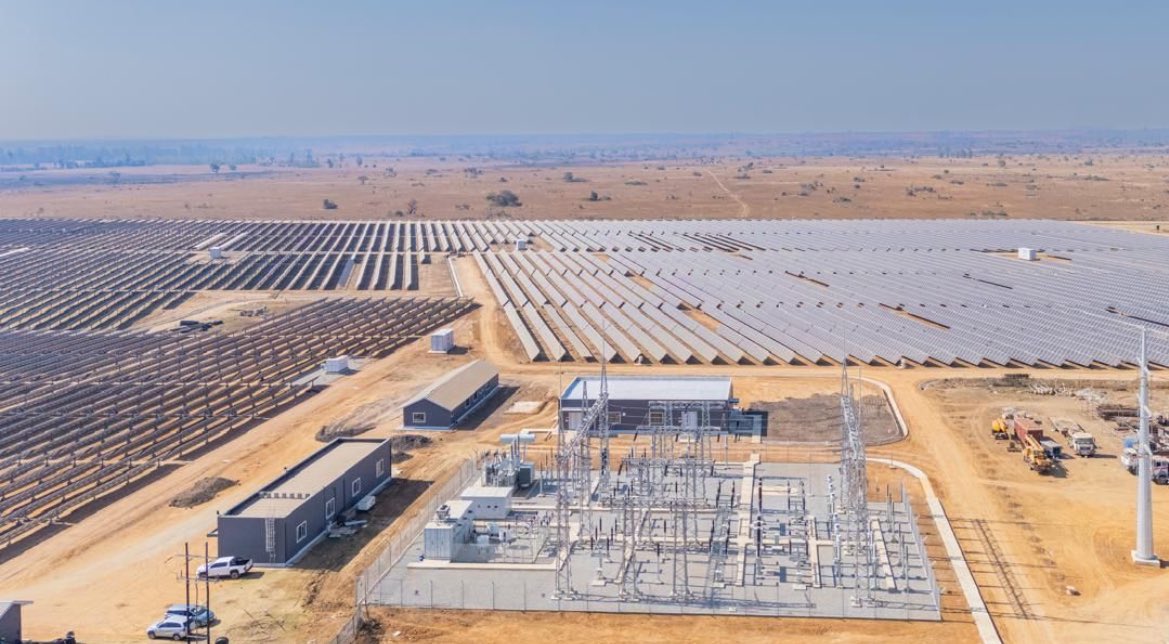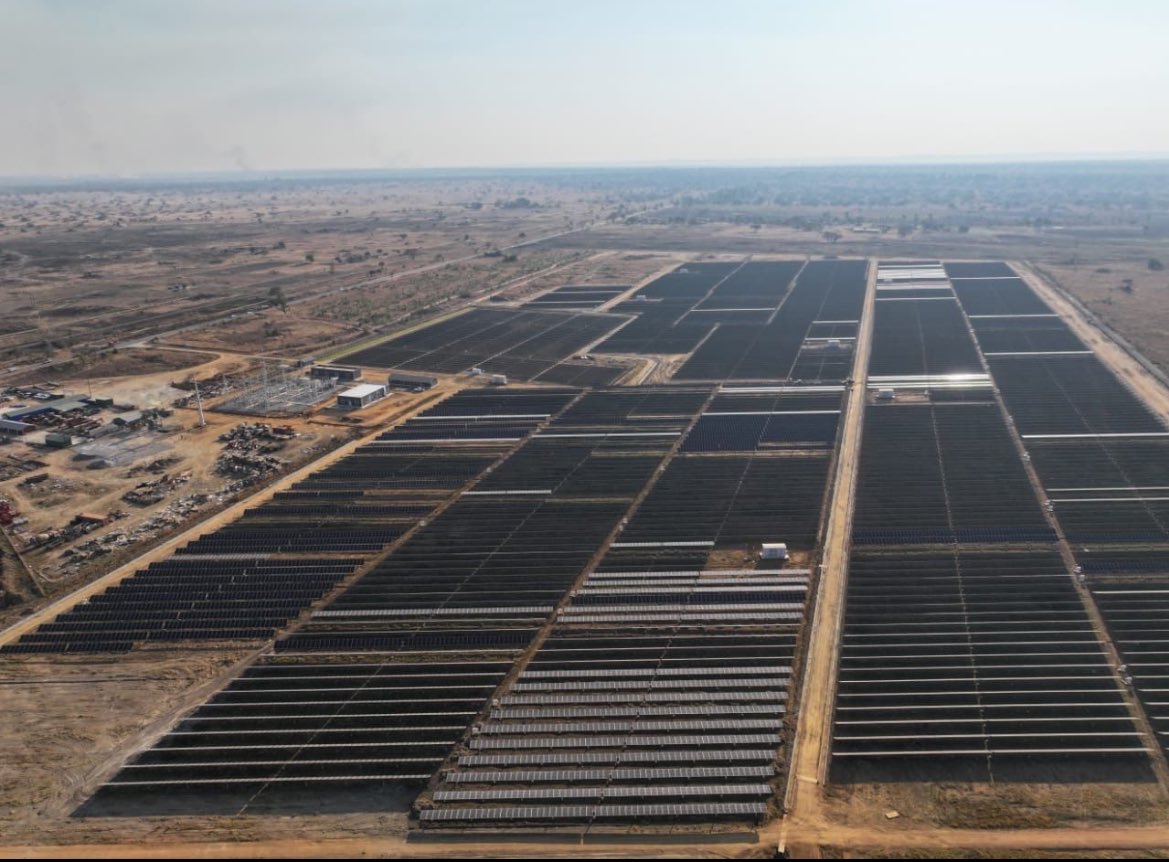
Sign up for daily news updates from CleanTechnica on email. Or follow us on Google News!
Zimbabwe has an installed electricity generation capacity of close to 3,000 MW, but there is a huge problem. The Zimbabwe Power Company’s (ZPC) main thermal plants are very old and keep breaking down. There were also three small coal power plants in Harare, Munyati, and Bulawayo that have installed capacities of at least 80 MW, but these were recently decommissioned, as it was no longer feasible to operate them. Then there are 920 MW (old coal-powered units 1 to 6 at Hwange) where breakdowns are a major issue. Some rehabilitation has been ongoing at these 6 units every now and then, and now, a major rehabilitation exercise is planned to bring back the old units to full capacity. The scope also includes addition of new units (unit 9 and 10). Let’s see how that goes.
ZPC recently commissioned two new units (7 and 8) at Hwange, adding 600 MW of new capacity. These have been doing all the heavy lifting since last year as the country’s other major power plant, the 1,050 MW Kariba Dam hydropower plant, has seen significant curtailment of its generation capacity. This plant is usually very reliable. However, due to the low rainfall in the region, ZPC has had to curtail generation to about 100 MW. Yes, only 100 MW from 1,050 MW is currently permitted by the Zambezi River Authority, the body that manages Lake Kariba. This is the third time in 5 years that low water levels are affecting generation at the plant and resulting in the country being forced to implement a loadshedding program. Climate change induced droughts are a major concern now for Zimbabwe’s power sector, leading to calls from stakeholders for the country to accelerate plans to diversify its energy generation mix. There is already some contribution from some independent power producers (IPPs), but it’s not much at the moment. IPPs still contribute less than 4% to Zimbabwe’s electricity generation mix.
Here is where the other big problem is in Zimbabwe’s electricity sector. Despite having over 100 projects from IPPs with licenses to generate electricity from solar PV, wind, etc., very few of them have taken off. Developers have been struggling to reach financial close due to the chaotic currency environment in Zimbabwe over the last decades. Zimbabwe’s currency chaos and inflation over the last couple of decades is well documented elsewhere. This situation doesn’t help people trying to work on long-term projects such as 20-year PPAs. In fact, this was recently tested in a landmark case when a developer went to court and lost the currency dispute. Hence, investments have been very slow in such an uncertain environment.

There is some good news on this front. We are now starting to see more independent power producers reaching financial close for their solar PV projects. We now have some that have commissioned their solar PV plants and are now feeding into the national grid. The latest one is Centragrid’s 25 MW solar power plant in Nyabira, just outside Harare. Centragrid, an independent power producer licensed to own, finance, construct, and operate the 25MW solar power plant and its associated transmission facilities in Nyabira, Zimbabwe, has recently completed the 25 MWp plant. The power plant is located at the 35 km mark along the Harare–Chirundu highway, and it is now feeding into the grid. Local pension funds such as NSSA, as well as investment arms of Old Mutual, helped make this project a reality. It is now the second largest utility-scale plant in Zimbabwe.

The largest utility-scale solar PV plant at the moment in Zimbabwe is Zimplat’s 35 MW solar plant near Selous, about 70 km from Harare. This 35 MW system is the first phase of a 185 MW plant estimated to cost $201 million. The first phase had a budget of $37 million. After successfully commissioning the 35 MW plant, Zimplat is now progressing towards the implementation of phase 2, which will be a 45 MW plant.
So, from seeing very little action on the utility-scale solar plant to getting 25 MW, 35 MW, and soon another 45 MW, there now appears to be some momentum in Zimbabwe. That’s not all. Work is set to start on 36 MW solar plant for PPC (a cement manufacturer in Bulawayo and Harare), 100 MW of solar PV for ferrochrome producer Afrochine (also by Centragrid), as well as 100 MW for the new Dinson Steel plant in Manhize (also by Centragrid). Therefore, in the next couple of years, Zimbabwean firms would have added over 450 MW of awesome utility-scale solar PV capacity! It’s been quite a long journey, but it seems some companies such as Centragrid have now found the winning formula to make utility-scale solar projects work in Zimbabwe. Looking forward to hearing more good news soon from Zimbabwe’s utility-scale solar sector.

Chip in a few dollars a month to help support independent cleantech coverage that helps to accelerate the cleantech revolution!
Have a tip for CleanTechnica? Want to advertise? Want to suggest a guest for our CleanTech Talk podcast? Contact us here.
Sign up for our daily newsletter for 15 new cleantech stories a day. Or sign up for our weekly one if daily is too frequent.
CleanTechnica uses affiliate links. See our policy here.
CleanTechnica’s Comment Policy




